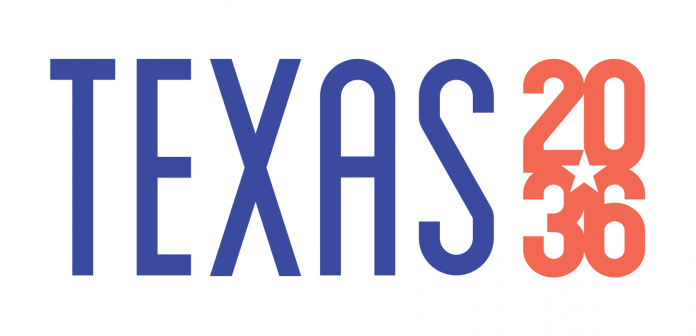AUSTIN As Texas looks toward its bicentennial, Texas 2036 releases a new data-driven roadmap for the state to be the best place to live and work.
Reflecting more than six years of research and analysis, “Shaping Our Future: A Strategic Framework for Texas” was created by Texas 2036 and endorsed by the 36 members of its nonprofit, nonpartisan board as a resource to the state’s officeholders, influencers and the public.
Released in advance of the 88th Texas Legislature, the Strategic Framework provides in-depth, cross-cutting data to inform key decisions about the state’s most significant issues – for example, is the state’s educational system properly preparing the next generation of the workforce? Are Texans confident in their ability to obtain affordable health care? What’s the state of Texas’ infrastructure?
Accompanying this second edition of the Strategic Framework is a new interactive dashboard, which allows Texas policymakers and the public to see the opportunities and headwinds and compare Texas’ progress against other large states.
Texas 2036 stresses reliance on relevant, trustworthy data as a key organizational value, and the report lays out over 150 metrics to chart the state’s progress toward achieving these goals. In addition, the Strategic Framework provides Texans a clear look at how the state is doing against similar states across these metrics that the organization has identified as the keys to continued success in the future. These peer states include California, Colorado, Florida, Georgia, Illinois, New York, North Carolina, Ohio, Pennsylvania, Virginia and Washington.
Among the framework’s key findings when reviewing the most recent performance indicators are:
Education and Workforce: Too few Texas students can read at grade level. In the 2021-2022 school year, only 50% of third graders could read on grade level. Early learning difficulties hamper students’ success in future education, where today, fewer than one in three high school graduates obtain a post-secondary credential within six years of graduation.
This rate is almost the lowest rate when compared against 11 peer states. Today, only 56% of Texas households earn above a living wage threshold (or $54,852 for a family of four). Texas is eighth among 12 peer states in providing living wage jobs for its residents, underperforming states such as Ohio, Pennsylvania and Virginia.
Health and Health Care: Rising prices have made health care unaffordable, even for those with insurance. Texas 2036 follows a metric that asks whether individuals needed to see a doctor but did not because of cost. Texas ranks last (12th out of 12) among peer states. A related metric asks about any needed care or treatment, including prescription drugs. In this measure, 59% of Texans answered that they had skipped care due to cost – including 56% of insured Texans.
Infrastructure: Texas’ population is projected to increase by nearly 25% by 2036 to more than 38 million residents, putting Texas’ broadband and energy infrastructures to the test. Approximately three million Texas households lack any access to high-speed internet service – indicating further work must be done to close the digital divide.
Natural Resource: As our population increases over the next 50 years, so will our demand for water. Based on the Texas Water Development Board’s 2022 Water Plan, projected demand will increase from 17.7 million acre-feet in this decade to 19.2 million acre-feet by the 2070s. Unfortunately, the plan also projected that the amount of available water supply from rivers, reservoirs and aquifers will diminish from 16.8 million acre-feet in this decade to 13.8 million acre-feet in the 2070s due to sedimentation of our rivers and lakes and depletion of groundwater resources.
Justice and Safety: In 2020, Texas had a 91% clearance rate for criminal court cases and an 81% rate for civil court cases, ranking fifth and seventh, respectively, of nine reporting peer states and indicating a growing backlog in court cases. Clearance rates under 100% mean an increasing backlog, showing that Texas courts are falling further behind in providing justice to victims, defendants, litigants and communities.
Also, at 19%, Texas ranks 25th in the nation and ninth among peer states for the percentage of children who experienced two or more Adverse Childhood Experiences across 2019-2020. ACEs are stressful events that can result in chronic toxic stress without mitigating or buffering support.
Government Performance: Texas’ state budget revenues rank fourth most volatile among its 12 peer states. Volatile and inconsistent revenue sources can contribute to unstable budgeting environments, weakening the capacity to fund critical government services consistently.




